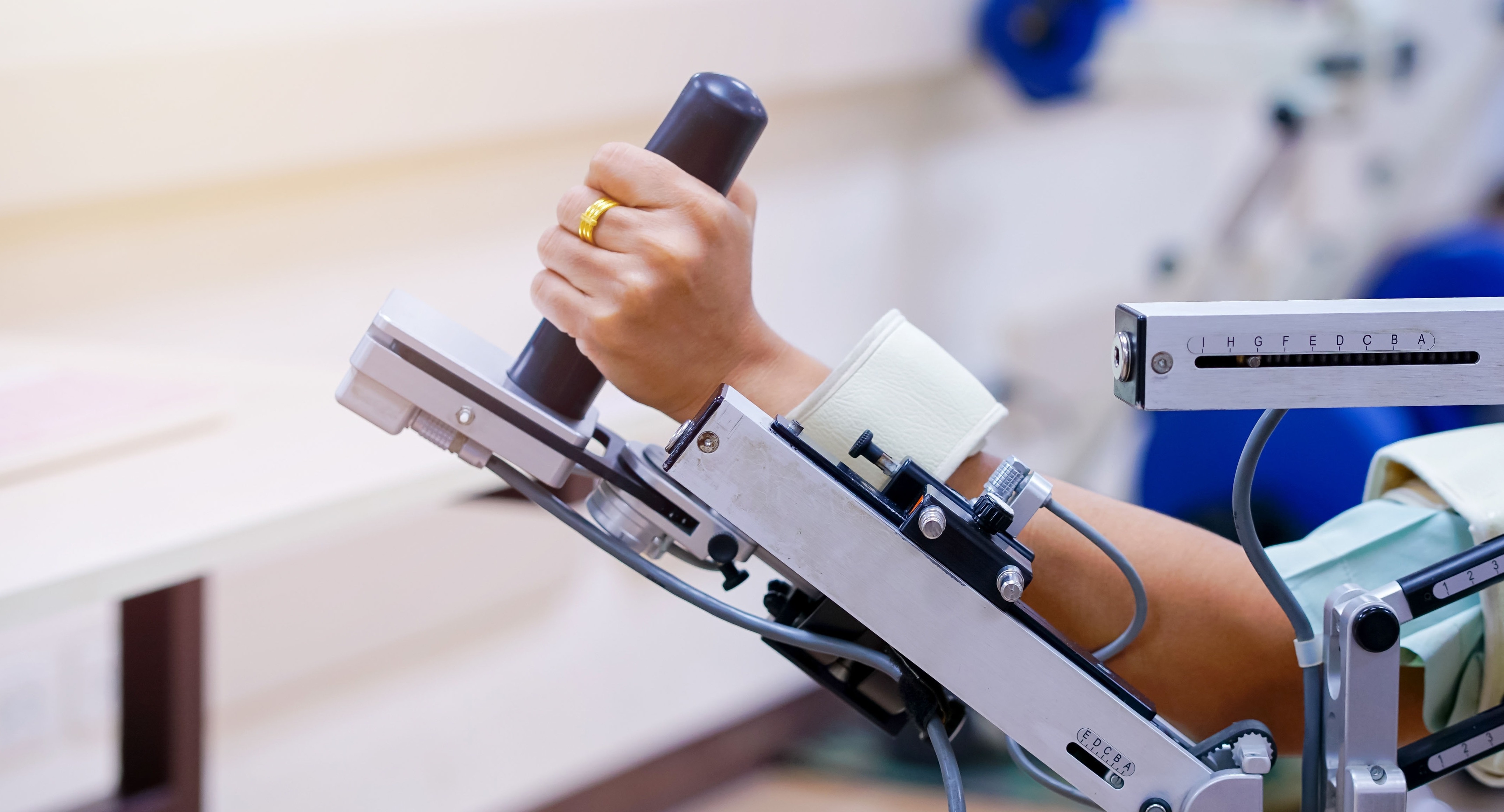Assisted Rehabilitation Using Soft Robotics

KEY INFORMATION
TECHNOLOGY OVERVIEW
Patients who have stroke, brain injuries, cerebral palsy, arthritis or suffer from other neurological disorders often experience motor impairments; patients with delayed or lack of rehabilitation suffer from more severe physical sequelae, such as, spasticity and muscle atrophy, which decreases their level of independence
It has been reported by World Health Organisation, that the need for rehabilitation continues to grow worldwide, especially in low- and middle income countries. The demand for rehabilitation services already exceeds availability, leaving a large unmet need. Longer life expectancies and increasing survival rates for those with severe disability, coupled with the rising prevalence of chronic diseases means that globally there will be an increase in the health burden associated with limitations in functioning. For both the patients and therapists, there is a need for efficient models of rehabilitation care are needed.
This invention is of a robotic manipulator that can assist or be programmed to move or mobilize patients’ limbs or joints repetitively during rehabilitation or to perform daily tasks, for e.g., of gripping a cup, bowl or utensil, in a safe, reliable and effective manner. The device can be used in a clinical and/or at-home setting.
TECHNOLOGY FEATURES & SPECIFICATIONS
This invention is of a hybrid robotic manipulator that consists of both soft and rigid materials, with a portable base, modular design and sensing elements integrated for more functions. The technology was developed to aid physiotherapists in doing repetitive rehabilitation motions for bed-ridden patients. This innovative solution for patients allows them to regain their upper limb motor functions and improve their quality of life. The technology can be used as an upper limb rehabilitation system that is portable, comfortable, lightweight, and user-friendly.
POTENTIAL APPLICATIONS
With its versatility and flexibility, this system can be deployed in places where assistance for rehabilitation of the patients is needed, such as hospitals, rehabilitation centres and elder-care centres to do simple repetitive rehabilitation motions for the patients, such as shoulder flexion/extension, shoulder abduction/adduction, elbow flexion/extension, etc.
Market Trends & Opportunities
The global rehabilitation robots market was valued at USD 226.0 million in 2021 and is expected to expand at a compound annual growth rate (CAGR) of 17.3% from 2022 to 2030 (Source: Grand View Research). The growth can be attributed to the rising per capita healthcare spending and rapid adoption of technologically advanced equipment in the healthcare sector. The rising prevalence of stroke and the rapidly growing population of older adults are some of the key driving factors responsible for the growth. Technological advancements are also playing a major role in supporting industry growth. Furthermore, increasing disorders such as cumulative trauma disorder, repetitive strain injury, and occupational overuse syndromes further impact the market positively. A large population with musculoskeletal disorders, spinal cord injury, and others tend to move to hospitals for rehabilitation services, thereby boosting the growth of the segment. In addition, surging awareness regarding technologically advanced systems, along with a rise in the number of FDA approvals on medical exoskeletons, is anticipated to drive the segmental growth. Couple this, with the acute shortage of qualified physiotherapists to address the expected increase in patient demand, indicates a strong market potential for assistive rehabilitation robotic technologies such as this invention.
Unique Value Proposition
This hybrid robotic arm ensures better safety during human-robotic interactions, and demonstrated higher force, versatility and portability compared to existing robotic arms.
The key feature of this invention provides:
- Better safety: The robotic arm was created with both rigid and soft materials. The core of the hybrid robotic arm was made of aluminium as the supporting structure, and the outer layer was made of fabric air pockets as the protective material. Compared to traditional rigid robotic arms, the hybrid robotic arm ensures better safety during human-robotic interactions, as well as higher portability which increases user convenience.
- Reconfigurable modular robotic arm: All modules of the hybrid robotic arm are exchangeable, which allows the robotic arm to exhibit different arm length and various configurations such as beam-joint-beam and beam-beam-joint, according to the application requirements.
- Integrated sensing elements for easier control: Machine Learning based sensing elements are integrated to the system to allow a playback learning capability in which the physiotherapists can teach the system to perform a rehabilitation motion along a desired path of motion, and to provide data for the physiotherapists to track and analyze rehabilitation progress of the patients
